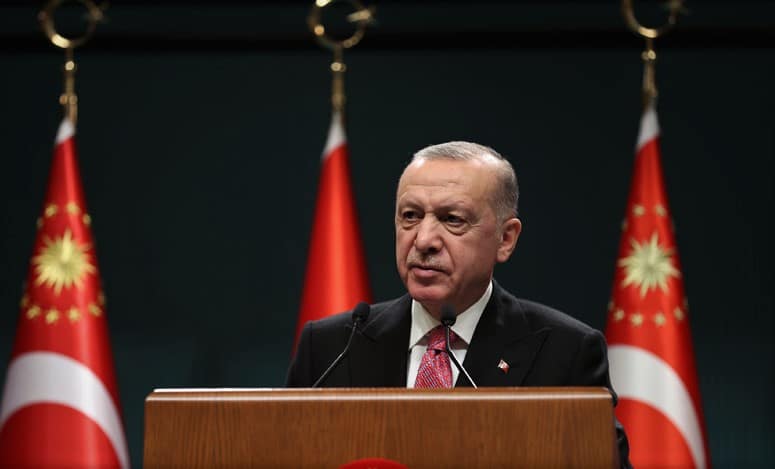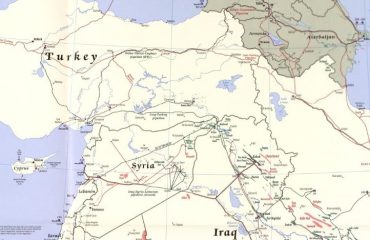

It is routine to write the highest/lowest such and such indicator of such and such year. No surprise and I will start by explaining the inflation rates announced on January 3 with a few boring figures.
The currently used consumer price index has been published since 2003. The highest monthly inflation in this entire period was in December at 13.6%. Let me proceed with making another comparison by including the consumer price index announced between 1969 and 2003. Inflation in December was the fifth-highest monthly inflation observed since February 1969 and the highest monthly inflation since the beginning of 1996.
Thus, Turkey ended 2021 with an annual inflation rate of 36%, the highest annual inflation rate in the last 19 years since 37.1% in September 2002.
None of us are innocent (some of us, in fact)
The rise of inflation to these levels can be attributed not only to the implemented economic program but also to some others who play a vital role in this surge.
For instance, the private sector employers. While the inflation did not show a downward trend and fluctuated around 8% a few years ago, did you hear any complaints from private sector representatives? When “inflation needs to decline” is said during the discussions in the economy channels, did not we hear “but what about growth?”
The rigidity fallacy in inflation
That is what inflation is. There will be no opponent even for the inflation levels considered high on a world scale. Inflation was treated as insignificant as in the 2007-2016 period when the average inflation moved in a narrow range around 8%.
Yet, the main reasons behind the factors that create the 8% inflation, which is thought to be solid, can become stronger over time: the result is hankering for 8% inflation. This country has been through this over and over again. For some time, Turkey suffered from inflation oscillating around 35%, and then we witnessed it jump to 70 percent in a few months. A typical example is the 1982-1988 period.
For most of this period, annual inflation was around 35%. The annual inflation, which had been 36% in October, jumped to 76% after six months, when making a price raise in the public goods and products was ceased in the first eleven months of the year due to the December 1987 elections, and a 22% increase was made in December. Then, until the 2000s, inflation did not fall below 60, let alone 30% or 40%, except for a few months.
Negative effects of inflation
Inflation is a kind of tax. The income of those who do not have bargaining power decreases as inflation rises, for example, the income of the minimum wage earner or pensioner. Even if their income gets increased at the beginning of the year as much as or slightly above the previous year’s inflation, the purchasing power will melt away during the year if the new year’s inflation is higher than before.
There are many other negative aspects of high inflation—no need to go into details. Let me briefly remind you how it can cause problems in the exchange-protected deposits.
The new deposit system loses charm if the high inflation that has occurred creates an expectation that inflation will not decrease, or even that it will increase in the future, and if it is thought that the exchange rate increase will be below inflation for one reason or another. Because in the new deposit system, the return is equal to whichever is higher: deposit interest rate or exchange rate increase. In this case, the savings owner’s income falls below the inflation rate.
Ahead
We will most likely face higher consumer inflation in the next few months for several reasons. First, from the beginning of November to the end of December, the dollar exchange rate rose by 41%. According to recent studies, the effect of a 10% increase in the exchange rate on inflation is around 35%. This effect is more significant when inflation and exchange rate increase are at high levels. Therefore, the 40% increase in dollar exchange rate in the last two months may increase inflation by 15-20 percentage points.
Part of that has probably been reflected in the prices. Nonetheless, there is still one more effect that will increase inflation. The new year’s hikes and the remaining exchange rate effect will most likely be reflected in the prices.
The second reason is, of course, the price hikes at the end of December. The significant rises in natural gas, electricity, and petroleum products will increase inflation. For example, transportation prices will rise and be reflected in the transported goods. Those who use those goods as inputs will mirror the price increases on the goods they produce. However, these adjustments do not happen immediately as of January 1.
The essence of the situation
The third reason is producer price hikes reaching 80%. Some will, of course, be reflected in the prices of consumer goods. Fourth, inflation is rising globally, and the prices of imported goods increase, which eventually has an inflationary effect. Lastly, there is an upward risk on inflation that the exchange rate has not reached equilibrium. For example, the dollar exchange rate increased by 18% last week. It is crystal clear that inflation will rise if the trend in recent days continues.
The moral of the article: There is an urgent need for an economic program that will reduce inflation to single digits -not just a monetary program, a more comprehensive program. The monetary policy part is significant. The monetary authority can start by considering the following fact: The dollar exchange rate increased by 80% between January 4 and December 31, 2021. Competitive exchange rate understanding and practice is the main reason behind this hike. In the same period, producer prices increased by 80%. In other words, the competitive advantage that came along with the exchange rate increase has completely gone with the price increase (cost increase). Let us face the fact.

